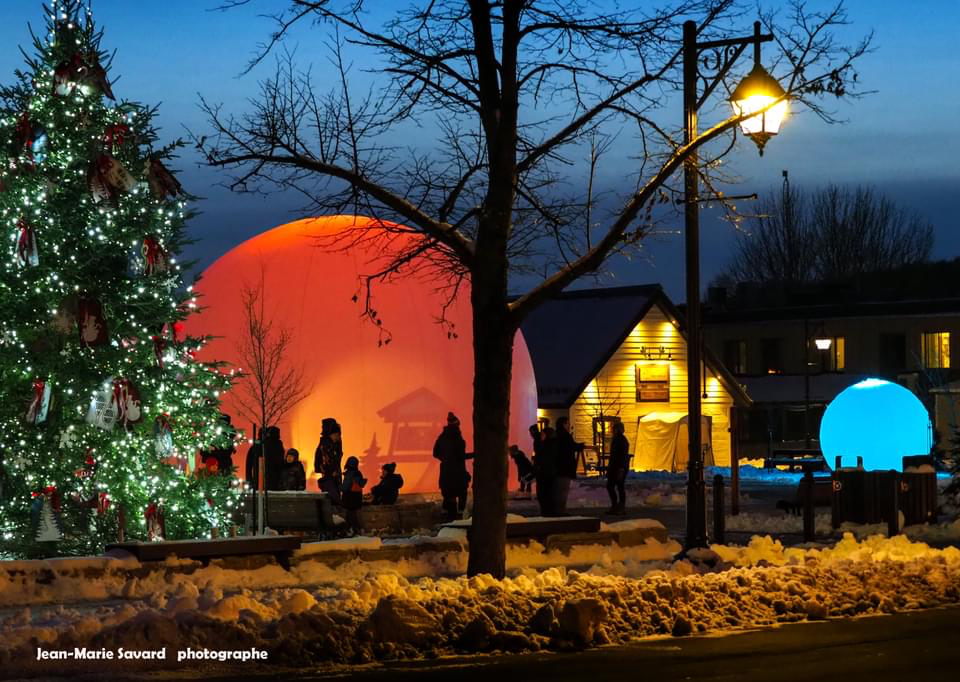
The Art of Revitalizing Downtown Areas
June 30, 2021 — Blog
By Christine Kerrigan and Louis Petitclerc
Struggling Downtowns
The year 2020 has drastically transformed our city centres – forcing them to adapt, innovate, and even reinvent themselves. With countless storefronts closed, several events cancelled, and many professionals working remotely, some downtown districts have been left feeling empty and abandoned.
However, there are many opportunities for cities to combat this major drop in foot traffic in downtown areas. Over the last months, we’ve been reflecting on the impact that public art installations can have on citizens and on the revitalisation of downtown districts. We’d like to share some of what we’ve learned based on our experience collaborating with the City of Mont-Tremblant.
Leading the way in Québec’s recreational tourism industry, Mont-Tremblant is a city of a little more than 10,000 inhabitants with nearly 3 million visitors annually. Due to the significant drop in tourism since the start of the COVID-19 pandemic, it’s not surprising that Mont-Tremblant has been impacted, like so many other cities around the globe. However, some challenges also have a way of leading to creative solutions.
Over this past year, the city revitalised its downtown core by creating a new public plaza right in the heart of the city. Citizens and visitors alike can now use this new urban space, which was built on a 80m2 lot, across from a church and bordering the main commercial artery.
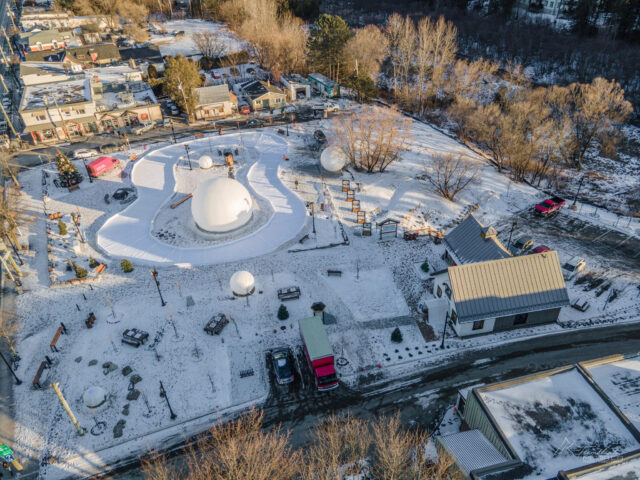
This newly designed public space is part of a larger initiative that was undertaken by the City of Mont-Tremblant several years ago. The overall strategy has been to improve the quality of life for citizens and visitors while simultaneously stimulating the local economy.
The Public Plaza
Based on the notion that public space serves to support various activities and opportunities for people to connect, this new space was designed to accommodate usage throughout the four seasons. In the summer, you’ll find water jets, light installations, and spaces for relaxation. In the winter, an ice rink and a fire pit were installed to offer an inclusive space where a wide variety of people from all walks of life can gather, mix and mingle.

Pascal De Bellefeuille, a municipal councilor in the City of Mont-Tremblant, explained that a group of citizens, retail and business owners, and advisors had been assembled in the planning phase to discuss how the public space should take shape and be brought to life as a new communal gathering space.
Whether it’s through the installation of new urban street furniture, public programming and events, or the integration of public art and design installations, there are several possible strategies for incentivizing and encouraging people to reclaim public space and downtown areas. We’ll take this opportunity to focus on public art and use Mont-Tremblant as our example.
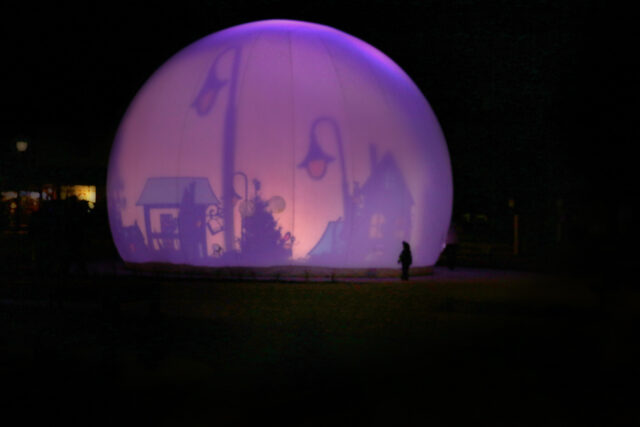
Art in the Service of Public Space
Public art can add significant value to the culture, community, urban experience, and economic vitality of our cities. Futhermore, it can contribute to a community’s identity, enliven public spaces, provide shared experiences, and cultivate a feeling of belonging and pride in a community. In Mont-Tremblant, the integration of the multimedia installation “moonGARDEN” for the inauguration of the new public plaza had an immediate impact on local foot traffic and on the overall positive response by the public to the newly designed space.
It was thanks to public art that citizens and visitors to Mont-Tremblant were able to share a common experience, even during the COVID-19 pandemic. According to Mr. De Bellefeuille, “the installation ‘moonGARDEN’ has been a key element to helping create this magic, by bringing out our inner child and encouraging people to connect with one another downtown.”
Furthermore, the presence of public art can have a significant impact on the time that visitors spend in a location and can indirectly benefit the neighbouring businesses by breathing life back into areas and districts during this period of time when they really need it.
Many cities and towns are experimenting with various ways to measure impact from art and design installations, such as measuring traffic on social media. The municipality of Mont-Tremblant informed us that the city experienced unprecedented social media traffic following the publication of the announcement of the “moonGARDEN” installation in the new public plaza.
As Mr. De Bellefeuille mentioned, “moonGARDEN is part of the city’s strategy to use public art and culture not only as a tool to enhance peoples lives in the community, but also as a tool for economic development.” Mont-Tremblant is a perfect example to demonstrate that art installations can be a powerful vehicle for helping revitalise our communities and city centres.
We are starting to see some cities encourage more collaboration and cooperation between municipalities and artists, designers, various professionals, and citizens during these pandemic recovery efforts. As we’ve witnessed in Mont-Tremblant and many other cities around the world, this is clearly a strategy that will bear fruit as we collectively navigate the post COVID-19 pandemic recovery.
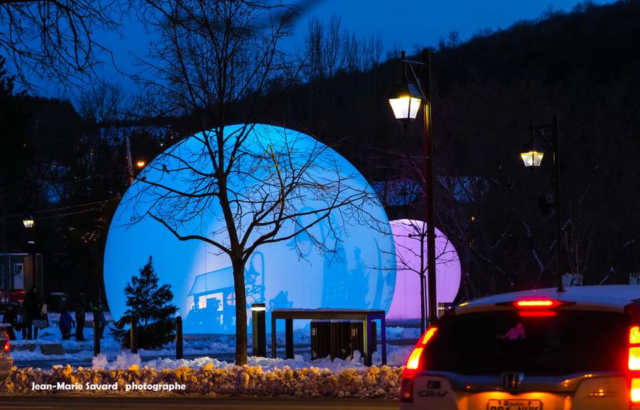
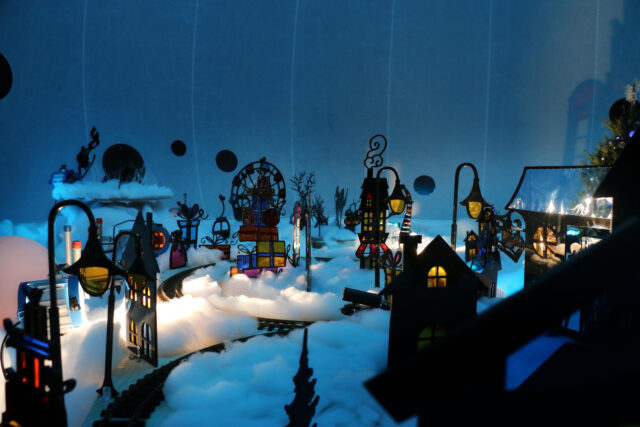
“Art is an effort to create a parallel world, a more human world.” ~ André Maurois
moonGARDEN is produced by Lucion
Special thanks to Daphnée Cyr, Recreation and Culture Coordinator, City of Mont-Tremblant for her dynamic vision.